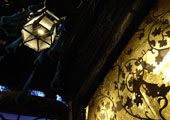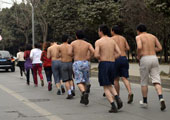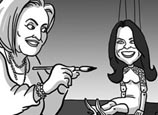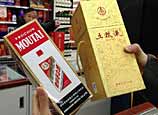
The 3,000-year-old city of Xi'an, which was the country's capital for 13 dynasties, is pinning its hopes on growing foreign investment to attract more inbound tourists.
Its rich historical sites have brought Xi'an international fame, and Western travelers are already attracted to the ancient city.
Most tourists to Xi'an come from the United States and Europe, according to the local tourism authority.
"I'd really like to go to Xi'an someday, especially to see the terracotta warriors," said Kyle Sutherlin, a university researcher from the US, who has visited China but not Xi'an.
"I'm sure that there is tons of neat stuff to see there and the Giant Wild Goose Pagoda looks pretty cool," he added.
However, the current number of foreign tourists to the city does not reflect the potential pull of Xi'an's rich tourism resources.
Statistics from the National Tourism Administration reveal that more than 1 million international travelers visited Xi'an in 2011, and that number was exceeded in the first 11 months of 2012.
But in 2011, the city ranked 18th on a list of Chinese cities that welcomed inbound tourists.
"I hope the situation will change in the future, when more business travelers arrive in Xi'an," said Kang Lifeng, deputy director of Xi'an tourism administration.
The low number of business travelers is the main reason for the city's lack of inbound tourists, he added.
Kang can expect more foreign business travelers in 2013, because the whole province is working on absorbing foreign investment and enterprises.
The province anticipates it will attract 2.88 billion yuan ($462 million) in foreign investment in 2012, a 22-percent increase compared with 2011, said Jia Mingde, deputy director of the commerce department of Shaanxi province.
More than 80 percent of foreign investment and trade in Shaanxi province is located in its capital, Xi'an, he added, because other regions in the province are not suitable for industrial investment.

















 At 75, he travelled in Europe; at 98, he got a master's degree; at 102, he published an autobiography.
At 75, he travelled in Europe; at 98, he got a master's degree; at 102, he published an autobiography.


![]()
